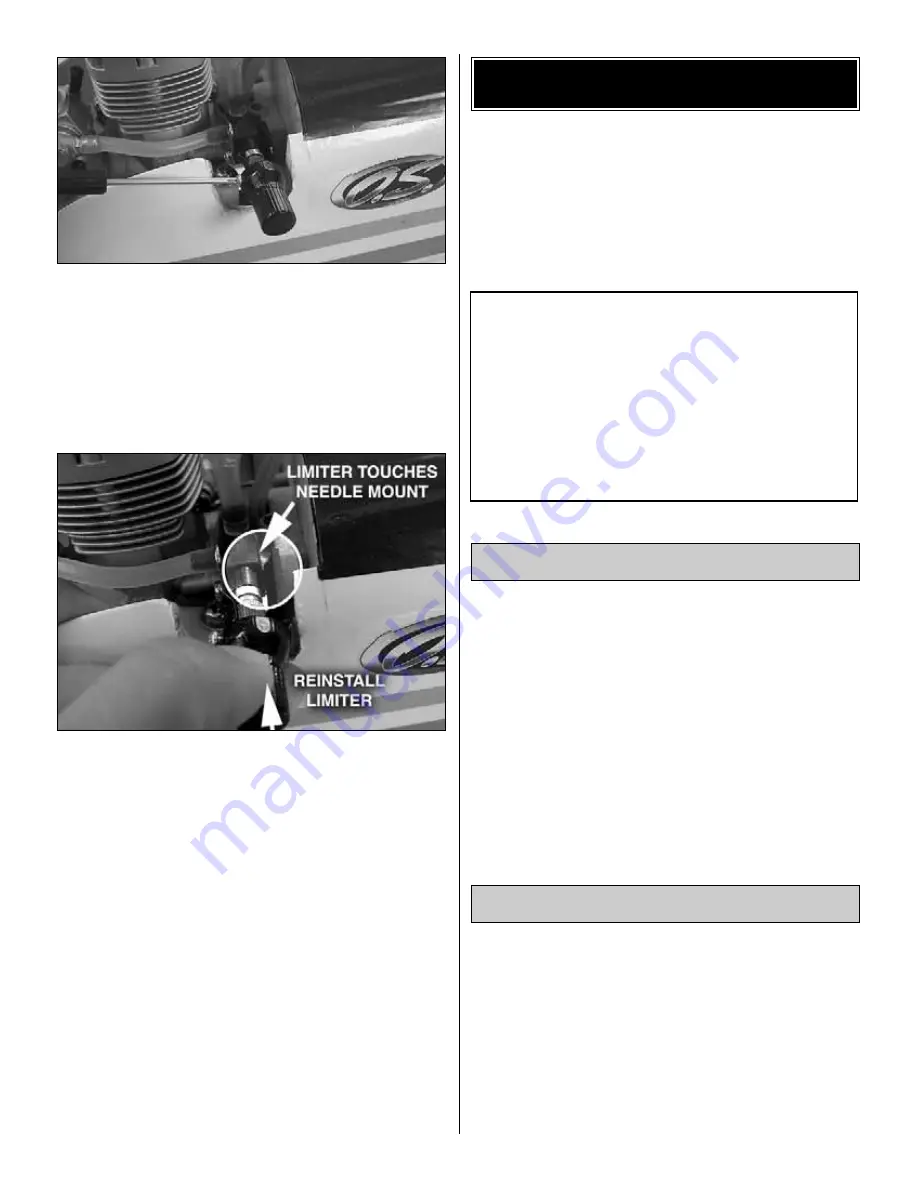
Remove the screw that holds the limiter in place and
remove the limiter. Adjust the high speed needle to the
leanest setting desired.
Note: For those with little engine adjusting experience,
completely close the needle valve and then open it 1-1/8 of
a turn (33 clicks). This is a good starting point to adjust the
high speed needle. At the leanest setting, the engine should
be turning the NexSTAR 11x5 propeller around 12600 rpm.
Reinstall the limiter with its leg rotated all the way against
back of the needle holder. Tighten the screw that holds it in
place. It would be a good idea to use thread locking
compound on the screw.
Do not attempt to fly by yourself. The Hobbico NexSTAR
Select has many features that make learning to fly R/C an
easier experience, but the help from an instructor is
invaluable. An instructor is going to be able to inspect your
airplane to make sure everything is working correctly and
he will also be able to give you a few tips and comments on
how to improve your flying. Also, make sure you fly at an
AMA sanctioned flying field.
Remember, it is assumed that your instructor is operating
the model for you.
Before the model is ready for takeoff, it must first be set up
to roll straight down the runway. With the engine running at
a low idle, place the plane on the runway and, if your flying
field permits, stand behind the model. Advance the throttle
just enough to allow the model to roll. If the model does not
roll straight down the runway, shut the engine off and adjust
the nose gear pushrod as necessary. Do not use the rudder
trim to correct the nose wheel because this will also affect
the rudder. Note: Crosswinds may affect the direction the
model rolls, so this test should be done in calm conditions,
or with the model facing directly into the wind.
If possible, takeoff directly into the wind. If you are experienced,
taking off in a crosswind is permissible (and sometimes
necessary—depending upon the prevailing wind conditions and
runway heading). Taking off into the wind will help the model roll
straight and also reduces ground speed for takeoff. Taxi the
model onto the runway or have an assistant carry it out and set
it down, pointing down the runway into the wind. When ready,
gradually advance the throttle while simultaneously using the
left stick (rudder/nose wheel) to steer the model. Gain as much
speed as the runway and flying site will practically allow before
gently applying up elevator lifting the model into the air. Be ready
Takeoff
Taxiing
IMPORTANT: Be aware of your proximity to R/C club
sites. If there is an R/C site within six miles of where you
are flying, and if you are operating your model on the
same frequency at the same time as somebody else,
there is a strong possibility that one or both models will
crash due to radio interference. There is great potential
for an out-of-control model to cause property damage
and/or severe personal injury. We strongly urge you to fly
at an R/C club site where frequency control is in effect so
you can be assured you will be the only one flying on
your channel.
FLYING
22
Summary of Contents for Nexstar select
Page 28: ...28 Correct Angle Rods Fin ...







































